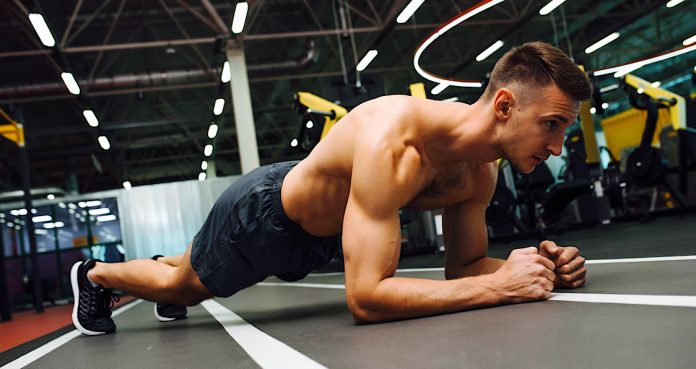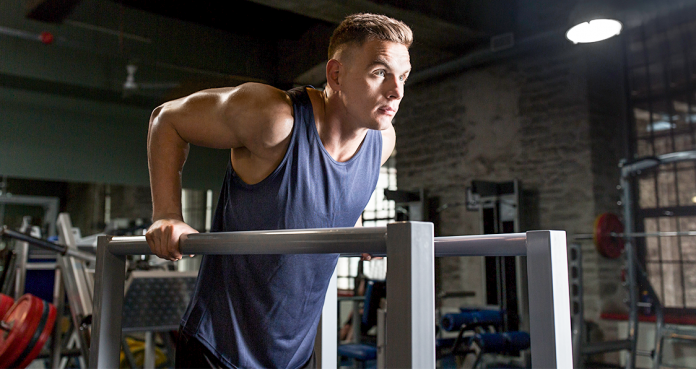Tag: Muscles

Nutritional Supplements: What to Take and Why
This article will explore the fundamentals of nutritional supplements and why incorporating them into your daily routine is beneficial. What are Nutritional Supplements? Nutritional supplements refer to products designed to enhance one’s diet and commonly consist of vitamins, herbs, minerals, and amino acids. These supplements are frequently linked to complementary and alternative medicine […]
The post Nutritional Supplements: What to Take and Why first appeared on .

Average Neck Size For Males and Females
Have you ever looked in the mirror and wondered if you have a giraffe-like neck? Don’t worry; you are not alone. Most of us have tried grabbing our necks in our hands.
Your neck size can affect your overall physique aesthetics. That said, the neck is one of the most overlooked muscles in the body. Consider bodybuilding for a second. Bodybuilders spend countless hours working on their pecs, biceps, quads, and even calves, but they neglect training their necks. Bodybuilding programs rarely feature neck exercises.
Your neck supports your head, protects your spinal cord, and allows you to move your head in all directions.
Combat sports fare better in the neck training department. Boxing and MMA athletes focus on training their necks as it allows them to take punches without getting knocked out. It also reduces the risk of concussions, neck strains, and other traumatic injuries.
Although most people don’t pay much attention to their neck size, it says a lot about them. A thick neck can signal dominance and strength, which can help you stand out in a crowd. Conversely, a small neck is often associated with weakness and vulnerability.
In this article, we go over the average neck size for males and females, factors affecting your neck size, how to measure your neck size correctly, and health risks associated with your neck size.
Furthermore, this article will help you determine whether you are a big burly bison or a delicate swan. Okay, enough with the animal analogies; here is everything you need to know about the average neck size for males and females.
Why You Should Know the Average Neck Size
You could determine your neck size by wrapping a measuring tape around your neck. Doing so will help you find a fitting collared shirt and ensure you don’t suffocate in your new wardrobe. Furthermore, knowing your neck size can help you assess your fitness level as it is linked with your body weight, BMI, waist size, and waist-to-hip ratio. [1]
Besides affecting your physique aesthetics, your neck size also says a lot about your health and fitness. A 2016 study found that your neck size may be a better alternative to waist circumference and other anthropometric measures as a metabolic risk marker for prediabetes. The study concludes that neck circumference can be considered for routine assessment in primary care clinics when using expensive and sophisticated machines is neither easy nor justifiable. Neck circumference measurements can be instrumental among populations such as pregnant women, where taking traditional measures may be challenging or not meaningful. A different study found that men with big necks may be at higher risk of heart disease. [2][3]
What is average neck size for men and women?
The average neck size for men is 15.2 inches (38.7 cm), while for women it is 13.1 inches (33.3 cm), as found in a 2020 study. It’s crucial to note that neck circumference is closely associated with factors such as body weight and BMI, so individual measurements may vary. To accurately measure your neck size, wrap a flexible measuring tape around the base of your neck, just above the collarbone. Knowing your neck size is essential for selecting well-fitting garments like shirts, as well as for monitoring changes in body composition or weight distribution.
Average Neck Size For Males
Your body mass index (BMI) is generally used to see if your neck is average size. BMI is based on your height and weight; it is derived by dividing your weight (in pounds) by the square of your height (in feet). You could use our convenient online calculator to determine your BMI.
Based on your BMI score, you will be categorized accordingly.
Underweight =

Does Sleep Help with Muscle Growth?
Is there any direct relation with sleep and muscle growth?
So you spend hours in the gym, pushing heavy ass weight, you eat super clean, while getting in all your protein and aminos but the gains don’t seem to be coming. Could muscle growth and sleep be related to the problem?
So what are you doing wrong?
The answer could be as simple as getting enough shut eye. As when you exercise, tiny tears develop in your muscle fibers but muscle repair only occurs when the body is resting or sleeping, and if you aren’t getting an adequate amount of sleep, your body cannot repair the muscle fibers as insufficient sleep is disruptive.
So how many hours of sleep should you get?
One Chinese study concluded that ‘there was a positive association between sleep quality and muscle strength. And men with shorter sleep duration(s), of (6 hours), had poorer muscle strength than that of men who slept for 7-8 hours’ and over’.
The study goes on to say that ‘good sleep quality is associated with greater muscle strength, while shorter sleep duration may be a risk factor for decreased muscle strength.
What actually happens while you are sleeping?
Sleep dramatically impacts your entire body, and it’s during sleep that your body recovers from exercise, repairs itself and grows new muscle tissue.
During this time your muscles also relax, and this is when your muscles are relieved of pain and tension.
When you are sleeping hormones such as testosterone, growth hormone and cortisol are produced in higher doses than throughout the rest of the day.
Testosterone
Testosterone is a hormone which determines how much muscle your body can build, and sleep is vital to this.
A 2011 study from the Journal of the American Medical Association found that ‘cutting back on sleep, may have a dramatic effect on men’s testosterone levels’.
The ‘study shows a week of sleep loss lowered testosterone levels by up to 15%’. And, that skipping sleep is the equivalent to ageing by that of 10-16 years.
And, Eve Van Caulter, director of the study, goes on to say that, ‘low testosterone levels are associated with reduced well being and vigour, which may also occur as a consequence of sleep loss’.
The study also found that 15% of the US adult working population were getting less than 5 hours of sleep a night, and for those wanting to add on quality muscle, that is nowhere near enough sleep.
Growth Hormone
Growth Hormone is also produced while we are sleeping, and this is greatly enhanced early in the night, specifically the first few hours of sleep.
And it has been concluded that ‘in adults the most reproducible pulse of growth hormone secretion occurs shortly after the onset of sleep in association with the first phase of slow- wave sleep (also referred to as SWS), and in men approximately 70% of the GH pulses during sleep coincide with SWS.’
So the first few hours of sleep are crucial as Growth Hormone is vital to the body being able to form and sustain muscle mass.
Cortisol
Cortisol is known as being the stress hormone but it plays so many other roles, and one of those is that it helps control your sleep wake cycle.
It stimulates wakefulness in the morning, which continues throughout the day, and slowly dips as the day goes on, coming to its lowest point around midnight, where melatonin and other hormones rise up in its place to bring about sleep.
Cortisol is the hormone that assists in the breaking down of muscle protein (catabolism), and in excess this catabolic hormone can decrease muscle mass and lean body mass.
What can help stop muscle breakdown?
When you are sleeping you are essentially fasting as your body is not consuming any food during that period and this is catabolic to muscle growth.
One study recommended ‘ingesting 40g of dietary protein prior to sleep to elicit a robust stimulation of muscle protein synthesis rates throughout the night’.
Another study stated that casein protein ingested ‘before sleep increased the ‘whole body protein synthesis rates and improved net protein balance’ and this is the ‘first study to show that protein ingested immediately before sleep is effectively digested and absorbed’.
So to increase the gains chug a casein shake to ensure you don’t waste away during your sleep.
So what supplements can help you sleep?
ZMA – is a supplement made from zinc, magnesium and vitamin B6. If you are zinc deficient then this supplement can boost testosterone levels, but it also helps induce sleep.
Supplements to increase anabolic potential
Glutamine- is an amino acid that prevents catabolism, promotes optimum growth hormone release and supports a strong immune system.
During sleeping periods, muscle wasting can occur due to amino acid shortage, and this can result in increased cortisol secretions and inflammation. Glutamine helps maintain a positive nitrogen balance and helps to promote repair.
BCAA’s – Branched Chain Amino Acids – have proven anabolic properties and increase testosterone and growth hormone levels.
BCAA’s can also help to blunt the rise in cortisol levels during sleep, helping to prevent catabolism and promote maximum anabolism.
So there you have it, male sure you get in a solid 8 hours and supplement accordingly to ensure all that hard work in the gym doesn’t go to waste – literally!
So until next time, keep pumping!
References
https://www.ncbi.nlm.nih.gov/pmc/articles/PMC7785053/
https://www.ncbi.nlm.nih.gov/pmc/articles/PMC5749041/
https://www.ncbi.nlm.nih.gov/pmc/articles/PMC4445839/
https://pubmed.ncbi.nlm.nih.gov/29199194/
https://www.ncbi.nlm.nih.gov/pmc/articles/PMC4755451/#:~:text=During%20NREM%20sleep%2C%20there%20is,activity%20among%20respiratory%20pump%20muscles.
https://pubmed.ncbi.nlm.nih.gov/8627466/#:~:text=Sleep%2Drelated%20secretion%20of%20GH,decrease%20wakefulness%20and%20increase%20SWS.
https://www.ncbi.nlm.nih.gov/pmc/articles/PMC1188300/
https://pubmed.ncbi.nlm.nih.gov/5675428/
https://www.ncbi.nlm.nih.gov/pmc/articles/PMC297368/
https://www.ncbi.nlm.nih.gov/pmc/articles/PMC7830980/
https://www.ncbi.nlm.nih.gov/pmc/articles/PMC4315033/
https://pubmed.ncbi.nlm.nih.gov/2307119/
https://pubmed.ncbi.nlm.nih.gov/12787547/
https://www.ncbi.nlm.nih.gov/pmc/articles/PMC5188418/#:~:text=Greater%20amino%20acid%20availability%20during,synthesis%20rates%20throughout%20the%20night.
For more news and updates, follow Generation Iron on Facebook, Twitter, and Instagram.

The 5 Biggest Planking Mistakes You Need To Stop Making
Portrait of young muscular man with bare chest doing plank exercise on floor during workout in modern gym
Most Common Planking Mistakes
Planks have a cult following amongst people who want stronger cores and shredded midriffs. While you might find several people performing the planks at your gym, only a few of them do them correctly.
If you’re reading this article, chances are even you’re making the five mistakes mentioned below while performing the exercise. Sit up and take note because fixing these errors can take your core game to the next level.
The Hanging Crotch
Yes, you read it right. The hanging crotch is a real planking problem. As easy as they might look, performing the planks can be hard, especially for beginners. A weak core tends to drop down from the correct position where the torso and lower body are in a straight line.
If you don’t have someone to correct your form, filming yourself while holding the plank can be a good way to review your set. Letting your torso hang below the straight line can result in the recruitment of your shoulders which can take away the tension from your midriff.
Forming A Bridge
While performing the planks, the fatigue which makes the torso hang low for some people can force the others to form a bridge. Both of these situations take the tension off the primary muscles and put them on the secondary muscles.
Some people lift their hips while planking to take the tension off their core. If you feel the fatigue setting in, it’s better to take a 5-10 second breather in-between your set rather than using a cheating posture.
Head Position
The head position is one of the most overlooked aspects of planking. Most of the people have the incorrect head position as they tend to look up straight or to their sides. Having a wrong head position while planking can cause neck pains in the long run.
Your neck will have the least amount of friction when it is in a straight line with the rest of the body. In an orthodox plank, you should be looking straight at the floor. Avoid moving your head to keep the tension on your mid-section.
Limb Position
Do you ever consider where and how you place your legs and arms while getting in the planking position? Most people don’t, and this is why they leave gains on the table. Some people make the mistake of keeping their hands interlocked and their legs placed together.
In the correct planking position, your feet should be placed shoulder-width apart and your elbows should be planted under your shoulders. Your upper arms should be parallel to each other, and your hands turned into fists.
TuT
TuT or Time Under Tension is arguably the biggest variable in the results you’ll see from the planks. If you’re a beginner, start by planking for 30-seconds and add 15-seconds every week as you get better at the exercise.
As you’re planking, make sure your core is tight and you’re focusing on contracting your abdominal. The more tension you can get on your abs while holding the right form, the better your results will be.
Which is your best planking time? Let us know in the comments below. Also, be sure to follow Generation Iron on Facebook and Twitter.
*Header image courtesy of Envato Elements.

8 Worst Exercises For Building Muscle
The Most Useless Exercises
We recently did an article about the best exercises you could do to build muscle mass. The article got us thinking about the exercises people love doing but which don’t help in budging the needle in the right direction.
Most of the exercises on the list are here because people don’t take out the time to learn the proper form of performing them. You could save yourself time and energy by performing substitute exercises in place of these exercises.
Any Resistance Exercise Done On A Stability Ball
The stability ball came into the limelight with the focus on core training. It’s believed that doing strength training exercises on an unstable surface is going to build muscle and core strength, but no studies have been able to prove it.
Performing exercises involving additional weights are safer done on the floor than using an unstable surface. There is a reason why football games are played with athletes standing on a field of some type, and not a ball or moving surface. To be a pro, train like one.
Ab/Oblique Rotation Machine
Many gyms have a machine that has a revolving base which can be used to train the abs and obliques. People need to stand/sit on it and twist their torsos to train the midriffs. Some people take it to the next level by using weights on the base to add resistance.
The basics of biomechanics state that you need to avoid moving through the terrible triad of lower back movements: simultaneous flexion, rotation, and side bending, especially under loading. Reading just this one line about biomechanics should be enough to make you stop using the rotation machine.
Dips
Although the dips are a great tricep exercise, many people don’t get anything out of it because they can’t establish a mind-muscle connection with the muscle, and can feel no contraction.
Romanian Deadlifts
It’s harder to train the posterior muscles as you can’t see them in the mirror directly. To perform the RDLs correctly you need the right amount of range of motion and bend in your knees which is sometimes too much to ask off a beginner.
Lat Pulldowns
Many people make the mistake of using momentum by swinging back and forth while performing the lat pulldowns. Using the jerking motion takes off tension from your back and puts it on your arms and shoulders.
Upright Rows
The uprights rows need the strictest of forms to optimally work the traps. If you use weights that are too heavy and need to swing back and forth to lift them, you’ll end up performing a weird variation of overhand barbell curls.
Tricep Kickbacks
Even though bis and tris are antagonistic muscles, the triceps don’t get the same love as the pythons. Elevation of your elbow, shoulder, the bend in your back, the distance between your feet, there are too many variables connected with performing the tricep kickbacks correctly.
Lunges
Only a few people perform the lunges correctly. The others either don’t take long enough steps, lunge too shallow, bend at the back or lose their balance. The lunges are best left to the pros.
Which exercise do you hate the most? Let us know in the comments below. Also, be sure to follow Generation Iron on Facebook, Twitter, and Instagram.
Header image courtesy of Envato Elements

Decoding Genetics: Check If You Have Bodybuilding Genetics
How to know if you have bodybuilding genetics.
Gym trainers will have you believe you can achieve your dream physique if you work hard enough, buy their training program, take the supplement they are selling, or hire them as a personal trainer. But truth be told, not everyone can be the next Mr. Olympia.
We agree that hard work, smart work, the right mentor all are important, but if you don’t have the genetics, you cannot make it as a pro bodybuilder. It might be too much to digest, but this is the truth.
Don’t believe us? Perform this simple experiment.
Start training with an individual who is approximately the same height, weight, age, and has the same BMI as you. Follow the same diet plan and perform the same exercises for the same number of reps and sets.
Compare your results at the end of eight weeks. One of you will have put on more muscle mass compared to the other. It is not because that person has been eating or lifting more behind the scenes. The gains are a result of his superior genetics.
Factors Affecting Muscularity
Muscle Insertions
Muscle insertions are one of the least talked about aspects of bodybuilding. Insertions determine to what degree a specific muscle can develop. Biceps and calves can best describe the effect of muscle insertions on your muscle mass and symmetry.
Depending on your bicep insertion, your guns might be long, short, or average in length.
How To Take A Bicep Length Test
Flex your bicep so that your upper arm forms a right angle with your lower arm.
If there is a lot of stance between your biceps and elbows, your biceps are short.
In case there is about an inch of space, consider your bicep average length.
If your bicep muscle is jammed right up against the elbow joint, the Greek gods are kind to you, and you have long biceps.
If a muscle is attached lower on the bone, it will look longer and fuller when developed. Insertions are what give your muscle bellies the “full” appearance. Longer bicep muscle creates a bigger and better peak when you flex your arm.
Calves work the same way – the two extremes being high and low calves.
How To Take A Calf Test
Flex your calf and see where the muscle ends on its way to your ankle.
If it ends not too far down from your knee – you have high calves. Train them as hard as you can, but they will always be a weak muscle group.
If your calves go way down, you are blessed. You probably are a proud owner of a pair of full-grown bulls.
Body Type
Most people mistakenly put themselves in the wrong body type group. Successful bodybuilders are usually a mix of two body types. You might need the same to win a bodybuilding show.
You need the muscle mass of an endomorph and small joints of a mesomorph to create the perfect muscle proportionality and symmetry illusion on stage.
On the other hand, if you are an ectomorph, you will have to work extra hard to add some meat to your naturally lean frame.
It is not the end of the world for you if you are an ectomorph, though. Other “branches” of fitness like calisthenics, CrossFit are great fits for an ectomorph.
How To Know If You Have The Perfect Genetics For Bodybuilding
There is only one way of knowing if you have the right genetics for being on top of the pro bodybuilding food chain, and that is to take a test. Don’t worry, you don’t have to sit in a classroom and write long answers for this test. We are talking about a lifestyle genetic test.
Lifestyle genetic tests are gaining popularity and are more affordable than ever. All you have to do is order a kit, send a sample to a testing company and wait for the results. These tests can help you determine your strengths and weaknesses in training, building muscle, nutrition, and losing, gaining, or maintaining weight.
Bodybuilding and DNA
ACTN3 is a crucial gene that has been studied and proven to impact strength and muscle size. This gene codes for α-actinin-3, a protein in fast-twitch muscle fibers. This type of fiber allows muscles to contract rapidly and is necessary for power sports like weightlifting and sprinting.
Elite power athletes have a much higher amount of functional ACTN3 as compared to the general population. If you too have the functional ACTN3 gene, you have an advantage in strength training and bodybuilding.
Genetics, Body Composition, and Weight
A lifestyle genetic test can tell you how strength training will affect your body composition and weight. Body composition describes the amount of fat, bone, water, and muscle in the body. This test assigns you one of three genotypes for this measure:
1.Enhanced
A person with an “enhanced” genotype is perfect for bodybuilding. An enhanced person will see significant gains in muscle mass, losses in body fat and weight in response to regular strength training.
2. Normal
A majority of people who take this test fall into this category. It means you will lose some weight and convert some body mass by doing regular strength training workouts. People in this category shouldn’t expect extraordinary results in return for ordinary work in the gym.
Individuals in this genotype will have to lift heavier weight, use more intensity, and volume compared to the “enhanced” people to stimulate muscle tissue growth.
3. Below Average
If a person gets a “below average” result for this test, strength training alone will not do much in improving his body composition and weight. They will have to step their training, diet, and recovery programs up a notch to match the “normal” folks.
Hypertrophy resistance training will be the best type of workout for these individuals.
Genetics and Power Potential
Sports can roughly be divided into two categories: power and endurance. Power sports like bodybuilding require short bursts of force, and endurance sports like distance running require less force generated over a longer period.
Depending on your genotype you could be better at power or endurance sports. People with more type I (slow-twitch) muscle fibers will be more likely to be good at endurance sports, whereas individuals with more type II (fast-twitch) fibers will excel at strength sports.
Types Of Endurance Genotypes:
1. High Endurance – Good at power sports like bodybuilding and weightlifting.
2. Equal Endurance/Power – Good at sports with a mix of endurance and power. This is the most common type of genotype.
3. Higher Power – The best genotype to have if you want to be a pro bodybuilder.
Conclusion
Your genetics might act as a hurdle if your goal is to win international bodybuilding shows, but you should not use it as an excuse to never start working out or to quit the lifestyle if you are already in it.
Even if you are not as gifted as Phil Heath in the bodybuilding genetics department, you still have a chance to win bodybuilding shows by competing in your local bodybuilding shows.
Have you ever taken a lifestyle genetic test?
Let us know in the comments below. Also, be sure to follow Generation Iron on Facebook, Twitter, and Instagram.
